A Continent in Crisis
The dark side of history: https://thememoryhole.substack.com/
The video "Africa: Continent in Crisis" featuring an interview with Maceo Dixon offers a firsthand account of the challenges facing many communities in sub-Saharan Africa. Dixon's two-month trip to the region provided him with a deep understanding of the complex issues at play.
Sub-Saharan Africa, Subsahara, or Non-Mediterranean Africa[3] is the area and regions of the continent of Africa that lie south of the Sahara. These include Central Africa, East Africa, Southern Africa, and West Africa. Geopolitically, in addition to the African countries and territories that are situated fully in that specified region, the term may also include polities that only have part of their territory located in that region, per the definition of the United Nations (UN).[4] This is considered a non-standardized geographical region with the number of countries included varying from 46 to 48 depending on the organization describing the region (e.g. UN, WHO, World Bank, etc.). The African Union (AU) uses a different regional breakdown, recognizing all 55 member states on the continent—grouping them into five distinct and standard regions.
The term serves as a grouping counterpart to North Africa, which is instead grouped with the definition of MENA (i.e. Middle East and North Africa) as it is part of the Arab world, and most North African states are likewise members of the Arab League. However, while they are also member states of the Arab League, the Comoros, Djibouti, Mauritania, and Somalia (and sometimes Sudan) are all geographically considered to be part of sub-Saharan Africa.[5] Overall, the UN Development Programme applies the "sub-Saharan" classification to 46 of Africa's 55 countries, excluding Djibouti, SADR, Somalia, and Sudan.[6]
Since around 3900 BCE,[7][8] the Saharan and sub-Saharan regions of Africa have been separated by the extremely harsh climate of the sparsely populated Sahara, forming an effective barrier that is interrupted only by the Nile in Sudan, though navigation on the Nile was blocked by the Sudd and the river's cataracts. There is also an evident genetic divide between North Africa and sub-Saharan Africa that dates back to the Neolithic. The Sahara pump theory explains how flora and fauna (including Homo sapiens) left Africa to penetrate Eurasia and beyond. African pluvial periods are associated with a "Wet Sahara" phase, during which larger lakes and more rivers existed.[9]
Nomenclature
Ethnographic map of Africa, from Meyers Blitz-Lexikon (1932)
Geographers historically divided the region into several distinct ethnographic sections based on each area's respective inhabitants.[10]
Commentators in Arabic in the medieval period used the general term bilâd as-sûdân ("Land of the Blacks") for the vast Sudan region (an expression denoting Central and West Africa),[11] or sometimes extending from the coast of West Africa to Western Sudan.[12] Its equivalent in Southeast Africa was Zanj ("Country of the Blacks"), which was situated in the vicinity of the Great Lakes region.[10][12]
The geographers drew an explicit ethnographic distinction between the Sudan region and its analogue Zanj, from the area to their extreme east on the Red Sea coast in the Horn of Africa.[10] In modern-day Ethiopia and Eritrea was Al-Habash or Abyssinia,[13] which was inhabited by the Habash or Abyssinians, who were the forebears of the Habesha.[14] In northern Somalia was Barbara or the Bilad al-Barbar ("Land of the Berbers"), which was inhabited by the Eastern Baribah or Barbaroi, as the ancestors of the Somalis were referred to by medieval Arab and ancient Greek geographers, respectively.[10][15][16][17]
In the 19th and 20th centuries, the populations south of the Sahara were divided into three broad ancestral groups: Hamites and Semites in the Horn of Africa and Sahel related to those in North Africa, who spoke languages belonging to the Afroasiatic family; Negroes in most of the rest of the subcontinent (hence, the toponym Black Africa for Africa south of the Sahara[18]), who spoke languages belonging to the Niger-Congo and Nilo-Saharan families; and Khoisan in Southern Africa, who spoke languages belonging to the Khoisan family.
Climate zones and ecoregions
Further information: Afrotropical realm; Tropical and subtropical grasslands, savannas, and shrublands; and List of tropical and subtropical moist broadleaf forests ecoregions
Climate zones of Africa, showing the ecological break between the hot desert climate of North Africa and the Horn of Africa (red), the hot semi-arid climate of the Sahel and areas surrounding semi-deserts (orange) and the tropical climate of Central and West Africa (blue). Southern Africa has a transition to subtropical or temperate climates (green and yellow), and more desert or semi-desert regions, centered on Namibia and Botswana.
Sub-Saharan Africa has a wide variety of climate zones or biomes. South Africa and the Democratic Republic of the Congo in particular are considered megadiverse countries. It has a dry winter season and a wet summer season.
The Sahel extends across all of Africa at a latitude of about 10° to 15° N. Countries that include parts of the Sahara Desert proper in their northern territories and parts of the Sahel in their southern region include Mauritania, Mali, Niger, Chad, and Sudan. The Sahel has a hot semi-arid climate.
South of the Sahel, a belt of savanna (the West and East Sudanian savannas) stretch from the Atlantic Ocean to the Ethiopian Highlands. The more humid Guinean and Northern Congolian forest–savanna mosaic lie between the savannas and the equatorial forests.
The Horn of Africa includes hot desert climate along the coast but a hot semi-arid climate can be found much more in the interior, contrasting with savanna and moist broadleaf forests in the Ethiopian Highlands.
Tropical Africa encompasses tropical rainforest stretching along the southern coast of West Africa and across most of Central Africa (the Congo) west of the African Great Lakes.
In East Africa, woodlands, savannas, and grasslands are found in the equatorial zone, including the Serengeti ecosystem in Tanzania and Kenya.
Distinctive Afromontane forests, grasslands, and shrublands are found in the high mountains and mountain ranges of eastern Africa, from the Ethiopian Highlands to South Africa.
South of the equatorial forests, the Western and Southern Congolian forest–savanna mosaic are transition zones between the tropical forests and the miombo woodland belt that spans the continent from Angola to Mozambique and Tanzania.
The Namib and Kalahari Deserts lie in Southern Africa, and are surrounded by semi-deserts including the Karoo region of South Africa. The Bushveld grasslands lie to the east of the deserts.
The Cape Floristic Region is at Africa's southern tip, and is home to diverse subtropical and temperate forests, woodlands, grasslands, and shrublands.
History
Main articles: History of Africa, History of West Africa, History of Central Africa, History of East Africa, and History of Southern Africa
Further information: African empires, List of kingdoms in pre-colonial Africa § List of African kingdoms, and African archaeology
Prehistory
Further information: History of Africa § Prehistory, Prehistoric West Africa, Prehistoric Central Africa, Prehistoric East Africa, Horn of Africa § Prehistory, Prehistoric Southern Africa, and African archaeology
Stone chopping tool from Olduvai Gorge
According to paleontology, early hominid skull anatomy was similar to that of their close cousins, the great African forest apes, gorilla and chimpanzee. However, they had adopted a bipedal locomotion and freed hands, giving them a crucial advantage enabling them to live in both forested areas and on the open savanna at a time when Africa was drying up, with savanna encroaching on forested areas. This occurred 10 million to 5 million years ago.[19]
By 3 million years ago several australopithecine hominid species had developed throughout Southern, East, and Central Africa. They were tool users rather than tool manufacturers. The next major evolutionary step occurred around 2.3 million BCE, when primitive stone tools were used to scavenge the carcasses of animals killed by other predators, both for their meat and their marrow. In hunting, H. habilis was most likely not capable of competing with large predators and was more prey than hunter, although H. habilis likely did steal eggs from nests and may have been able to catch small game and weakened larger prey such as cubs and older animals. The tools were classed as Oldowan.[20]
Roughly 1.8 million years ago, Homo ergaster first appeared in the fossil record in Africa. From Homo ergaster, Homo erectus (upright man) evolved 1.5 million years ago. Some of the earlier representatives of this species were small-brained and used primitive stone tools, much like H. habilis. The brain later grew in size, and H. erectus eventually developed a more complex stone tool technology called the Acheulean. Potentially the first hominid to engage in hunting, H. erectus mastered the art of making fire. They were the first hominids to leave Africa, going on to colonize the entire Old World, and perhaps later on giving rise to Homo floresiensis. Although some recent writers suggest that H. georgicus, a H. habilis descendant, was the first and most primitive hominid to ever live outside Africa, many scientists consider H. georgicus to be an early and primitive member of the H. erectus species.[21]
The fossil and genetic evidence shows Homo sapiens developed in Southern and East Africa by around 350,000 to 260,000 years ago[22][23][24] and gradually migrated across the continent in waves. Between 50,000 and 60,000 years ago, their expansion out of Africa launched the colonization of the planet by modern humans. By 10,000 BCE, Homo sapiens had spread to all corners of the world. This dispersal of the human species is suggested by linguistic, cultural and genetic evidence.[20][25]
During the 11th millennium BP, pottery was independently invented in West Africa, with the earliest pottery there dating to about 9,400 BC from central Mali.[26] It spread throughout the Sahel and southern Sahara.[27]
After the Sahara became a desert, it did not present a totally impenetrable barrier for travelers between north and south because of the application of animal husbandry towards carrying water, food, and supplies across the desert. Prior to the introduction of the camel,[28] the use of oxen, mule, and horses for desert crossing was common, and trade routes followed chains of oases that were strung across the desert. The trans-saharan trade was in full motion by 500 BCE with Carthage being a major economic force for its establishment.[29][30][31] It is thought that the camel was first brought to Egypt after the Persian Empire conquered Egypt in 525 BCE, although large herds did not become common enough in North Africa for camels to be the pack animal of choice for the trans-saharan trade.[32]
West Africa
Main article: History of West Africa
Further information: Ghana Empire, Mali Empire, Songhay Empire, Kingdom of Benin, and Kingdom of Nri
Nok sculpture, terracotta, Louvre
The Bantu expansion is a major migration movement that originated in West Central Africa (possibly around Cameroon) around 2500 BCE, reaching East and Central Africa by 1000 BCE and Southern Africa by the early centuries CE.
The Djenné-Djenno city-state flourished from 250 BCE to 900 CE and was influential to the development of the Ghana Empire. The Nok culture of Nigeria (lasting from 1,500 BCE to 200 CE) is known from a type of terracotta figure.[33] There were a number of medieval empires of the southern Sahara and the Sahel, based on trans-Saharan trade, including the Ghana Empire and the Mali Empire, Songhai Empire, the Kanem Empire and the subsequent Bornu Empire.[34] They built stone structures like in Tichit, but mainly constructed in adobe. The Great Mosque of Djenne is most reflective of Sahelian architecture and is the largest adobe building in the world.
In the forest zone, several states and empires such as Bono State, Akwamu and others emerged. The Ashanti Empire arose in the 18th century in modern-day Ghana.[35] The Kingdom of Nri, was established by the Igbo in the 11th century. Nri was famous for having a priest-king who wielded no military power. Nri was a rare African state which was a haven for freed slaves and outcasts who sought refuge in their territory. Other major states included the kingdoms of Ifẹ and Oyo in the western block of Nigeria which became prominent about 700–900 and 1400 respectively, and center of Yoruba culture. The Yoruba's built massive mud walls around their cities, the most famous being Sungbo's Eredo. Another prominent kingdom in southwestern Nigeria was the Kingdom of Benin 9th–11th century whose power lasted between the 15th and 19th century and was one of the greatest Empires of African history documented all over the world. Their dominance reached as far as the well-known city of Eko which was named Lagos by the Portuguese traders and other early European settlers. The Edo-speaking people of Benin are known for their famous bronze casting and rich coral, wealth, ancient science and technology and the Walls of Benin, which is the largest man-made structure in the world.
In the 18th century, the Oyo and the Aro confederacy were responsible for most of the slaves exported from modern-day Nigeria, selling them to European slave traders.[36] Following the Napoleonic Wars, the British expanded their influence into the Nigerian interior. In 1885, British claims to a West African sphere of influence received international recognition, and in the following year the Royal Niger Company was chartered under the leadership of Sir George Goldie. In 1900, the company's territory came under the control of the British government, which moved to consolidate its hold over the area of modern Nigeria. On 1 January 1901, Nigeria became a British protectorate as part of the British Empire, the foremost world power at the time. Nigeria was granted its independence in 1960 during the period of decolonization.
Central Africa
Main article: History of Central Africa
Fictionalised portrait of Nzinga, queen of the Ndongo and Matamba kingdoms
Archeological finds in Central Africa provide evidence of human settlement that may date back over 10,000 years.[37] According to Zangato and Holl, there is evidence of iron-smelting in the Central African Republic and Cameroon that may date back to 3,000 to 2,500 BCE.[38] Extensive walled sites and settlements have recently been found in Zilum, Chad. The area is located approximately 60 km (37 mi) southwest of Lake Chad, and has been radiocarbon dated to the first millennium BCE.[39][40]
Trade and improved agricultural techniques supported more sophisticated societies, leading to the early civilizations of Sao, Kanem, Bornu, Shilluk, Baguirmi, and Wadai.[41]
Following the Bantu Migration into Central Africa, during the 14th century, the Luba Kingdom in southeast Congo came about under a king whose political authority derived from religious, spiritual legitimacy. The kingdom controlled agriculture and regional trade of salt and iron from the north and copper from the Zambian/Congo copper belt.[42]
Rival kingship factions which split from the Luba Kingdom later moved among the Lunda people, marrying into its elite and laying the foundation of the Lunda Empire in the 16th century. The ruling dynasty centralised authority among the Lunda under the Mwata Yamyo or Mwaant Yaav. The Mwata Yamyo's legitimacy, like that of the Luba king, came from being viewed as a spiritual religious guardian. This imperial cult or system of divine kings was spread to most of central Africa by rivals in kingship migrating and forming new states. Many new states received legitimacy by claiming descent from the Lunda dynasties.[42]
The Kingdom of Kongo existed from the Atlantic west to the Kwango river to the east. During the 15th century, the Bakongo farming community was united with its capital at M'banza-Kongo, under the king title, Manikongo.[42] Other significant states and peoples included the Kuba Kingdom, producers of the famous raffia cloth, the Eastern Lunda, Bemba, Burundi, Rwanda, and the Kingdom of Ndongo.
East Africa
Main article: History of East Africa
Sudan
Further information: History of Sudan
Sphinx of the Nubian Emperor Taharqa
Nubia, covered by present-day northern Sudan and southern Egypt, was referred to as "Aethiopia" ("land of the burnt face") by the Greeks.[43] Nubia in her greatest phase is considered sub-Saharan Africa's oldest urban civilisation. Nubia was a major source of gold for the ancient world. Nubians built famous structures and numerous pyramids. Sudan, the site of ancient Nubia, has more pyramids than anywhere else in the world.[44][better source needed]
Horn of Africa
Main article: Horn of Africa § History
Further information: History of Ethiopia, History of Somalia, History of Eritrea, History of Djibouti, and Ethiopian historiography
Stone city of Gondershe, Somalia
The Axumite Empire spanned the southern Sahara, south Arabia and the Sahel along the western shore of the Red Sea. Located in northern Ethiopia and Eritrea, Aksum was deeply involved in the trade network between India and the Mediterranean. Growing from the proto-Aksumite Iron Age period (c. 4th century BCE), it rose to prominence by the 1st century CE. The Aksumites constructed monolithic stelae to cover the graves of their kings, such as King Ezana's Stele. The later Zagwe dynasty, established in the 12th century, built churches out of solid rock. These rock-hewn structures include the Church of St. George at Lalibela.
Fasilides Castle, Ethiopia
In ancient Somalia, city-states flourished such as Opone, Mosyllon and Malao that competed with the Sabaeans, Parthians and Axumites for the wealthy Indo–Greco–Roman trade.[45]
In the Middle Ages several powerful Somali empires dominated the region's trade, including the Ajuran Sultanate, which excelled in hydraulic engineering and fortress building,[46] the Sultanate of Adal, whose General Ahmed Gurey was the first African commander in history to use cannon warfare on the continent during Adal's conquest of the Ethiopian Empire,[47] and the Geledi Sultanate, whose military dominance forced governors of the Omani empire north of the city of Lamu to pay tribute to the Somali Sultan Ahmed Yusuf.[48][49][50]
Southeast Africa
Further information: Southeast Africa § History, and History of Africa § Southeast Africa
According to the theory of recent African origin of modern humans, the mainstream position held within the scientific community, all humans originate from either Southeast Africa or the Horn of Africa.[51] During the first millennium CE, Nilotic and Bantu-speaking peoples moved into the region, and the latter now account for three-quarters of Kenya's population.
The Tongoni Ruins south of Tanga in Tanzania
On the coastal section of Southeast Africa, a mixed Bantu community developed through contact with Muslim Arab and Persian traders, leading to the development of the mixed Arab, Persian and African Swahili City States.[52] The Swahili culture that emerged from these exchanges evinces many Arab and Islamic influences not seen in traditional Bantu culture, as do the many Afro-Arab members of the Bantu Swahili people. With its original speech community centered on the coastal parts of Tanzania (particularly Zanzibar) and Kenya – a seaboard referred to as the Swahili Coast – the Bantu Swahili language contains many Arabic loan-words as a consequence of these interactions.[53]
The earliest Bantu inhabitants of the Southeast coast of Kenya and Tanzania encountered by these later Arab and Persian settlers have been variously identified with the trading settlements of Rhapta, Azania and Menouthias[54] referenced in early Greek and Chinese writings from 50 CE to 500 CE.[55][56][57][58][59][60][61][62] These early writings perhaps document the first wave of Bantu settlers to reach Southeast Africa during their migration.[63]
Between the 14th and 15th centuries, large medieval Southeast African kingdoms and states emerged, such as the Buganda,[64] Bunyoro and Karagwe[64] kingdoms of Uganda and Tanzania.
During the early 1960s, the Southeast African nations achieved independence from colonial rule.
Southern Africa
Main article: History of Southern Africa
Further information: Kingdom of Mutapa
Great Zimbabwe: Tower in the Great Enclosure
Settlements of Bantu-speaking peoples, who were iron-using agriculturists and herdsmen, were already present south of the Limpopo River by the 4th or 5th century displacing and absorbing the original Khoisan speakers. They slowly moved south, and the earliest ironworks in modern-day KwaZulu-Natal Province are believed to date from around 1050. The southernmost group was the Xhosa people, whose language incorporates certain linguistic traits from the earlier Khoisan inhabitants. They reached the Fish River in today's Eastern Cape Province. Monomotapa was a medieval kingdom (c. 1250–1629), which existed between the Zambezi and Limpopo rivers of Southern Africa in the territory of modern-day Zimbabwe and Mozambique. Its old capital was located at Great Zimbabwe.
In 1487, Bartolomeu Dias became the first European to reach the southernmost tip of Africa. In 1652, a victualling station was established at the Cape of Good Hope by Jan van Riebeeck on behalf of the Dutch East India Company. For most of the 17th and 18th centuries, the slowly expanding settlement was a Dutch possession. In 1795, the Dutch colony was captured by the British during the French Revolutionary Wars. The British intended to use Cape Town as a major port on the route to Australia and India. It was later returned to the Dutch in 1803, but soon afterward the Dutch East India Company declared bankruptcy, and the Dutch (now under French control) and the British found themselves at war again. The British captured the Dutch possession yet again at the Battle of Blaauwberg, commanded by Sir David Blair. The Zulu Kingdom was a Southern African tribal state in what is now KwaZulu-Natal in southeastern South Africa. The small kingdom gained world fame during and after their defeat in the Anglo-Zulu War. During the 1950s and early 1960s, most sub-Saharan African nations achieved independence from colonial rule.[65]
Demographics
Main article: Demographics of Africa
Population
Further information: List of African countries by population
Population density in Africa, 2006
Fertility rates and life expectancy in sub-Saharan Africa
According to the 2022 revision of the World Population Prospects[66][67], the population of sub-Saharan Africa was 1.1 billion in 2019. The current growth rate is 2.3%. The UN predicts for the region a population between 2 and 2.5 billion by 2050[68] with a population density of 80 per km2 compared to 170 for Western Europe, 140 for Asia and 30 for the Americas.
Sub-Saharan African countries top the list of countries and territories by fertility rate with 40 of the highest 50, all with TFR greater than 4 in 2008. All are above the world average except South Africa and Seychelles.[69] More than 40% of the population in sub-Saharan countries is younger than 15 years old, as well as in Sudan, with the exception of South Africa.[70]
Country Population Area (km2) Literacy (M/F)[71] GDP per Capita (PPP)[72] Trans (Rank/Score)[73] Life (Exp.)[71] HDI EODBR/SAB[74] PFI (RANK/MARK)
Angola 18,498,000 1,246,700 82.9%/54.2% 6,800 168/2 42.4 0.486 172/171 132/58,43
Burundi 8,988,091 27,830 67.3%/52.2% 700 168/1.8 49 0.316 176/130 103/29,00
Democratic Republic of the Congo 68,692,542 2,345,410 80.9%/54.1% 800 162/11.9 46.1 0.286 182/152 146/53,50
Cameroon 18,879,301 475,440 77%/59.8% 3,700 146/2.2 50.3 0.482 171/174 109/30,50
Central African Republic 4,511,488 622,984 64.8%/33.5% 700 158/2.8 44.4 0.343 183/159 80/17,75
Chad 10,329,208 1,284,000 40.8%/12.8% 2,300 175/1.6 50.6 0.328 178/182 132/44,50
Republic of the Congo 3,700,000 342,000 90.5%/79.0% 800 162/1.9 54.8 0.533 N/A 116/34,25
Equatorial Guinea 1,110,000 28,051 93.4%/80.3% 37,400 168/1.8 51.1 0.537 170/178 158/65,50
Gabon 1,514,993 267,667 88.5%/79.7% 18,100 106/2.9 56.7 0.674 158/152 129/43,50
Kenya 39,002,772 582,650 77.7%/70.2% 3,500 146/2.2 57.8 0.519 95/124 96/25,00
Nigeria 174,507,539 923,768 84.4%/72.7%[75] 5,900 136/2.7 57 0.504 131/120 112/34,24
Rwanda 10,473,282 26,338 71.4%/59.8% 2,100 89/3.3 46.8 0.429 67/11 157/64,67
São Tomé and Príncipe 212,679 1,001 92.2%/77.9% 3,200 111/2.8 65.2 0.509 180/140 NA
Tanzania 44,928,923 945,087 77.5%/62.2% 3,200 126/2.6 51.9 0.466 131/120 NA/15,50
Uganda 32,369,558 236,040 76.8%/57.7% 2,400 130/2.5 50.7 0.446 112/129 86/21,50
Sudan 31,894,000 1,886,068 79.6%/60.8% 4,300 176/1.5 62.57[76] 0.408 154/118 148/54,00
South Sudan 8,260,490 619,745 1,600
Djibouti 516,055 23,000 N/A 3,600 111/2.8 54.5 0.430 163/177 110/31,00
Eritrea 5,647,168 121,320 N/A 1,600 126/2.6 57.3 0.349 175/181 175/115,50
Ethiopia 85,237,338 1,127,127 50%/28.8% 2,200 120/2.7 52.5 0.363 107/93 140/49,00
Somalia 9,832,017 637,657 N/A N/A 180/1.1 47.7 N/A N/A 164/77,50
Botswana 1,990,876 600,370 80.4%/81.8% 17,000 37/5.6 49.8 0.633 45/83 62/15,50
Comoros 752,438 2,170 N/A 1,600 143/2.3 63.2 0.433 162/168 82/19,00
Lesotho 2,130,819 30,355 73.7%/90.3% 3,300 89/3.3 42.9 0.450 130/131 99/27,50
Madagascar 19,625,000 587,041 76.5%/65.3% 1,600 99/3.0 59 0.480 134/12 134/45,83
Malawi 14,268,711 118,480 N/A 1,200 89/3.3 47.6 0.400 132/128 62/15,50
Mauritius 1,284,264 2,040 88.2%/80.5% 22,300 42/5.4 73.2 0.728 17/10 51/14,00
Mozambique 21,669,278 801,590 N/A 1,300 130/2.5 42.5 0.322 135/96 82/19,00
Namibia 2,108,665 825,418 86.8%/83.6% 11,200 56/4.5 52.5 0.625 66/123 35/9,00
Seychelles 87,476 455 91.4%/92.3% 29,300 54/4.8 72.2 0.773 111/81 72/16,00
South Africa 59,899,991 1,219,912 N/A 13,600 55/4.7 50.7 0.619 34/67 33/8,50
Eswatini 1,123,913 17,363 80.9%/78.3% 11,089 79/3.6 40.8 0.608 115/158 144/52,50
Zambia 11,862,740 752,614 N/A 4,000 99/3.0 41.7 0.430 90/94 97/26,75
Zimbabwe 11,392,629 390,580 92.7%/86.2% 2,300 146/2.2 42.7 0.376 159/155 136/46,50
Benin 8,791,832 112,620 47.9%/42.3% 2,300 106/2.9 56.2 0.427 172/155 97/26,75
Mali 12,666,987 1,240,000 32.7%/15.9% 2,200 111/2.8 53.8 0.359 156/139 38/8,00
Burkina Faso 15,730,977 274,200 25.3% 1,900 79/3.6 51 0.331 150/116 N/A
Cape Verde 499,000 322,462 7,000
Ivory Coast 20,617,068 322,463 3,900
Gambia 1,782,893 11,295 2,600
Ghana 24,200,000 238,535 4,700
Guinea 10,057,975 245,857 2,200
Guinea-Bissau 1,647,000 36,125 1,900
Liberia 4,128,572 111,369 1,300
Mauritania 3,359,185 1,030,700 4,500
Niger 17,129,076 1,267,000 1,200
Senegal 12,855,153 196,712 3,500
Sierra Leone 6,190,280 71,740 1,600
Togo 7,154,237 56,785 1,700
GDP per Capita (PPP) (2016, 2017 (PPP, US$)), Life (Exp.) (Life Expectancy 2006), Literacy (Male/Female 2006), Trans (Transparency 2009), HDI (Human Development Index), EODBR (Ease of Doing Business Rank June 2008 through May 2009), SAB (Starting a Business June 2008 through May 2009), PFI (Press Freedom Index 2009)
Languages and ethnic groups
Further information: Languages of Africa, Writing systems of Africa § Indigenous writing systems, List of African ethnic groups, African diaspora, and Black people
Map showing the traditional language families spoken in Africa
Yoruba drummers (Niger-Congo)
A San man (Khoisan)
Maasai women and children (Nilo-Saharan)
Saho women (Afroasiatic)
A Boer European African family (Indo-European)
Sub-Saharan Africa contains over 1,500 languages.
Afroasiatic
With the exception of the extinct Sumerian (a language isolate) of Mesopotamia, Afroasiatic has the oldest documented history of any language family in the world. Egyptian was recorded as early as 3200 BCE. The Semitic branch was recorded as early as 2900 BCE in the form of the Akkadian language of Mesopotamia (Assyria and Babylonia) and circa 2500 BCE in the form of the Eblaite language of northeastern Syria.[77]
The distribution of the Afroasiatic languages within Africa is principally concentrated in North Africa and the Horn of Africa. Languages belonging to the family's Berber branch are mainly spoken in the north, with its speech area extending into the Sahel (northern Mauritania, northern Mali, northern Niger).[78][79] The Cushitic branch of Afroasiatic is centered in the Horn, and is also spoken in the Nile Valley and parts of the African Great Lakes region. Additionally, the Semitic branch of the family, in the form of Arabic, is widely spoken in the parts of Africa that are within the Arab world. South Semitic languages are also spoken in parts of the Horn of Africa (Ethiopia, Eritrea). The Chadic branch is distributed in Central and West Africa.[80] Hausa, its most widely spoken language, serves as a lingua franca in West Africa (Niger, Ghana, Togo, Benin, Cameroon, and Chad).[81]
Khoisan
The several families lumped under the term Khoi-San include languages indigenous to Southern Africa and Tanzania, though some, such as the Khoi languages, appear to have moved to their current locations not long before the Bantu expansion.[82] In Southern Africa, their speakers are the Khoikhoi and San (Bushmen), in Southeast Africa, the Sandawe and Hadza.
Niger–Congo
The Niger–Congo family is the largest in the world in terms of the number of languages (1,436) it contains.[83] The vast majority of languages of this family are tonal, such as Yoruba and Igbo. However, others such as Fulani, Wolof and Kiswahili are not. A major branch of the Niger–Congo languages is Bantu, which covers a greater geographic area than the rest of the family. Bantu speakers represent the majority of inhabitants in southern, central and southeastern Africa, though San, Pygmy, and Nilotic groups, respectively, can also be found in those regions. Bantu-speakers can also be found in parts of Central Africa such as the Gabon, Equatorial Guinea and southern Cameroon. Swahili, a Bantu language with many Arabic, Persian and other Middle Eastern and South Asian loan words, developed as a lingua franca for trade between the different peoples in southeastern Africa. In the Kalahari Desert of Southern Africa, the distinct people known as Bushmen (also "San", closely related to, but distinct from "Hottentots") have long been present. The San evince unique physical traits, and are the indigenous people of southern Africa. Pygmies are the pre-Bantu indigenous peoples of Central Africa.
Nilo-Saharan
The Nilo-Saharan languages are concentrated in the upper parts of the Chari and Nile rivers of Central Africa and Southeast Africa. They are principally spoken by Nilotic peoples and are also spoken in Sudan among the Fur, Masalit, Nubian and Zaghawa peoples and in West and Central Africa among the Songhai, Zarma and Kanuri. The Old Nubian language is also a member of this family.
Major languages of Africa by region, family and number of primary language speakers in millions:
Central Africa
Niger–Congo, Bantu
Lingala[84]
Kinyarwanda: 12[85]
Kongo: 5+[84][86][87]
Tshiluba[84]
Kirundi[88]
Nilo-Saharan
Nubian: 5+[89]
Fur: 5+[90]
Zaghawa[91]
Masalit
Niger–Congo
Kordofanian languages
Nuba[92]
Horn of Africa
Afro-Asiatic
Semitic
Amharic: 20+
Tigrinya: 5
Cushitic
Somali: 10–15
Oromo: 30–35
Nilo-Saharan: <1[93][94]
Gumuz
Anuak
Kunama
Nara
Niger–Congo: <1[95][96]
Zigula
Swahili (Bravanese and Bajuni dialects)
Southeast Africa
Niger–Congo, Bantu:
Swahili: 5–10
Gikuyu: 9[97]
Ganda: 20[98]
Luhya: 6[97]
Austronesian
Malagasy: 20+[99]
Niger-Congo, Ubangian
Gbaya: 2[100][failed verification]
Banda: 1–2[100]
Zande[101][failed verification]
Nilo-Saharan
Kanuri: 10[102][103][104]
Luo: 5[97][105]
Sara: 3–4[100][104]
Kalenjin: 5[97]
Dinka[101]
Nuer[101]
Shilluk[101]
Maasai: 1–2[106][107]
Southern Africa
Niger–Congo, Bantu
Zulu: 10[108]
Xhosa: 8[108]
Shona: 7
Sotho: 5
Tswana: 4[108][109]
Umbundu: 4[86]
Northern Sotho: 4[108]
Chichewa: 8[110][111]
Makua: 8[112]
Indo-European
Germanic
Afrikaans: 7–10
Romance
Portuguese: 14[113]
West Africa
Niger–Congo
Benue–Congo
Ibibio (Nigeria): 7[102]
Volta–Niger
Igbo (Nigeria): 30–35[102]
Yoruba: 40[102]
Kwa:
Akan (Ghana, Ivory Coast): 20–25
Gur
More: 5
Senegambian
Fula (West Africa): 40[102][103][114][115][116]
Wolof: 8[114][115]
Afro-Asiatic
Chadic
Hausa: 50[102][103]
Nilo-Saharan
Saharan
Kanuri: 10[103][104][117]
Songhai: 5[103][117]
Zarma: 5[103][117]
Genetic history
Main articles: Genetic history of Africa and Genetic history of the African diaspora
Major cities
Lagos
Kinshasa
Further information: Urbanization in Africa
Sub-Saharan Africa has several large cities. Lagos is a city in the Nigerian state of Lagos. The city, with its adjoining conurbation, is the most populous in Nigeria, and the second-most populous in Africa after Cairo, Egypt. It is one of the fastest-growing cities in the world,[118][119][120][121][122][123][124] and also one of the most populous urban agglomerations.[125][126] Lagos is a major financial centre in Africa; this megacity has the highest GDP,[127] and also houses Apapa, one of the largest and busiest ports on the continent.[128][129][130]
Dar es Salaam is the former capital of, as well as the most populous city in, Tanzania; it is a regionally important economic centre.[131] It is located on the Swahili coast.
Johannesburg is the largest city in South Africa. It is the provincial capital and largest city in Gauteng, which is the wealthiest province in South Africa.[132] While Johannesburg is not one of South Africa's three capital cities, it is the seat of the Constitutional Court. The city is located in the mineral-rich Witwatersrand range of hills, and is the centre of a large-scale gold and diamond trade.
Nairobi is the capital and the largest city of Kenya. The name comes from the Maasai phrase Enkare Nyrobi, which translates to "cool water", a reference to the Nairobi River which flows through the city. The city is popularly referred to as the Green City in the Sun.[133]
Other major cities in sub-Saharan Africa include Abidjan, Cape Town, Kinshasa, Luanda, Mogadishu and Addis Ababa.
Largest cities or towns in Sub Saharan Africa
worldpopulationreview.com 2022 City Population estimates.
Rank Pop. Rank Pop.
1 Lagos 21,320,000 11 Yaounde 4,336,670
2 Kinshasa 17,071,000 12 Kano 4,219,209
3 Johannesburg 11,061,878 13 Douala 3,926,645
4 Luanda 8,952,496 14 Ibadan 3,756,445
5 Dar Es Salaam 7,404,689 15 Antananarivo 3,669,900
6 Khartoum 6,160,327 16 Abuja 3,652,029
7 Abidjan 5,515,794 17 Kampala 3,651,919
8 Addis Ababa 5,227,794 18 Kumasi 3,630,326
9 Nairobi 5,118,844 19 Dakar 3,326,001
10 Cape Town 4,800,954 20 Port Harcourt 3,324,694
Economy
This section needs to be updated. The reason given is: The most recent data in this section seems to be from 2015. Please help update this article to reflect recent events or newly available information. (April 2021)
Main article: Economy of Africa
In the mid-2010s, private capital flows to sub-Saharan Africa – primarily from the BRICs, private-sector investment portfolios, and remittances – began to exceed official development assistance.[134]
Johannesburg
As of 2011, Africa is one of the fastest developing regions in the world. Six of the world's ten fastest-growing economies over the previous decade were situated below the Sahara, with the remaining four in East and Central Asia. According to the World Bank, the economic growth rate in the region had risen to 4.7% in 2013. This continued rise was attributed to increasing investment in infrastructure and resources as well as steady expenditure per household.[135]
424 million people in sub-Saharan Africa were reportedly living in severe poverty in 2019. In 2022, 460 million people—an increase of 36 million in only three years—were anticipated to be living in extreme poverty as a result of the COVID-19 pandemic and the Russian invasion of Ukraine.[136][137][138] Sub-Saharan Africa's government debt rose from 28% of gross domestic product in 2012 to 50% of gross domestic product in 2019. The COVID-19 pandemic caused it to rise to 57% of gross domestic product in 2021.[139][140][141]
Sub-Saharan Africa was severely harmed when government revenue declined from 22% of GDP in 2011 to 17% in 2021. 15 African nations are at significant risk of debt, and 7 are currently in financial crisis according to the IMF.[142][143][144] The region went on to receive IMF Special Drawing Rights of $23 billion in 2021 to assist critical public spending.[145]
Energy and power
Main article: Mineral industry of Africa
Oil production by country
(with other key actors of African or oil economy) Rank Area bb/day Year Like...
_ W: World 85,540,000 2007 est.
01 E: Russia 9,980,000 2007 est.
02 Ar: Saudi Arb 9,200,000 2008 est.
04 As: Libya 4,725,000 2008 est. Iran
10 Af: Nigeria 2,352,000 2011 est. Norway
15 Af: Algeria 2,173,000 2007 est.
16 Af: Angola 1,910,000 2008 est.
17 Af: Egypt 1,845,000 2007 est.
27 Af: Tunisia 664,000 2007 est. Australia
31 Af: Sudan 466,100 2007 est. Ecuador
33 Af: Eq.Guinea 368,500 2007 est. Vietnam
38 Af: DR Congo 261,000 2008 est.
39 Af: Gabon 243,900 2007 est.
40 Af: Sth Africa 199,100 2007 est.
45 Af: Chad 156,000 2008 est. Germany
53 Af: Cameroon 87,400 2008 est. France
56 E: France 71,400 2007
60 Af: Ivory Coast 54,400 2008 est.
_ Af: Africa 10,780,400 2011 Russia
Source: CIA.gov Archived 12 May 2012 at the Wayback Machine, World Facts Book > Oil exporters.
Energy sources in sub-Saharan Africa. Fossil fuels and hydroelectric power make up the largest share of sub-Saharan African electricity.
As of 2009, 50% of Africa was rural with no access to electricity. In 2021, Africa generated 889 TWh of electricity, amounting to 3.13% of the global market share.[146] Many countries are affected by power shortages.[147]
The percentage of residences with access to electricity in sub-Saharan Africa is the lowest in the world. In some remote regions, fewer than one in every 20 households has electricity.[148][149][150]
The Athlone Power Station in Cape Town, South Africa
Because of rising prices in commodities such as coal and oil, thermal sources of energy are proving to be too expensive for power generation. Sub-Saharan Africa has the potential to generate 1,750 TWh of energy, of which only 7% has been explored. The failure to exploit its full energy potential is largely due to significant underinvestment, as at least four times as much (approximately $23 billion a year) and what is currently spent is invested in operating high cost power systems and not on expanding the infrastructure.[151]
African governments are taking advantage of the readily available water resources to broaden their energy mix. Hydro Turbine Markets in sub-Saharan Africa generated revenues of $120.0 million in 2007 and is estimated to reach $425.0 million.[when?] Asian countries, notably China, India, and Japan, are playing an active role in power projects across the African continent. The majority of these power projects are hydro-based because of China's vast experience in the construction of hydro-power projects and part of the Energy & Power Growth Partnership Services programme.[152]
With electrification numbers, sub-Saharan Africa with access to the Sahara and being in the tropical zones has massive potential for solar photovoltaic electrical potential.[153] Six hundred million people could be served with electricity based on its photovoltaic potential.[154][failed verification] China is promising to train 10,000 technicians from Africa and other developing countries in the use of solar energy technologies over the next five years. Training African technicians to use solar power is part of the China-Africa science and technology cooperation agreement signed by Chinese science minister Xu Guanhua and African counterparts during premier Wen Jiabao's visit to Ethiopia in December 2003.[155]
The New Partnership for Africa's Development (NEPAD) is developing an integrated, continent-wide energy strategy. This has been funded by, amongst others, the African Development Bank (AfDB) and the EU-Africa Infrastructure Trust Fund. These projects must be sustainable, involve a cross-border dimension and/or have a regional impact, involve public and private capital, contribute to poverty alleviation and economic development, and involve at least one country in sub-Saharan Africa.[151]
Renewable Energy Performance Platform was established by the European Investment Bank and the United Nations Environment Programme with a five-year goal of improving energy access for at least two million people in sub-Saharan Africa. It has so far invested around $45 million to renewable energy projects in 13 countries in sub-Saharan Africa. Solar power and hydropower are among the energy methods used in the projects.[148][156]
Media
Radio is the major source of information in sub-Saharan Africa.[157] Average coverage stands at more than a third of the population. Countries such as Gabon, Seychelles, and South Africa boast almost 100% penetration. Only five countries—Burundi, Djibouti, Eritrea, Ethiopia, and Somalia—still have a penetration of less than 10%. Broadband penetration outside of South Africa has been limited where it is exorbitantly expensive.[158][159] Access to the internet via cell phones is on the rise.[160]
Television is the second major source of information.[157] Because of power shortages, the spread of television viewing has been limited. Eight per cent have television, a total of 62 million. Those in the television industry view the region as an untapped green market. Digital television and pay for service are on the rise.[161]
Oil and minerals
Phenakite from the Jos Plateau, Plateau State, Nigeria
The region is a major exporter to the world of gold, uranium, chromium, vanadium, antimony, coltan, bauxite, iron ore, copper, and manganese. South Africa is a major exporter of manganese[162] as well as chromium. A 2001 estimate is that 42% of the world's reserves of chromium may be found in South Africa.[163] South Africa is the largest producer of platinum, with 80% of the total world's annual mine production and 88% of the world's platinum reserve.[164] Sub-Saharan Africa produces 33% of the world's bauxite, with Guinea as the major supplier.[165] Zambia is a major producer of copper.[166] The Democratic Republic of Congo is a major source of coltan. Production from DR Congo is very small, but the country has 80% of the proven reserves in Africa, which are 80% of those worldwide.[167] Sub-Saharan Africa is a major producer of gold, producing up to 30% of global production. Major suppliers are South Africa, Ghana, Zimbabwe, Tanzania, Guinea, and Mali. South Africa had been first in the world in terms of gold production since 1905, but in 2007 it moved to second place, according to GFMS, the precious metals consultancy.[168] Uranium is major commodity from the region. Significant suppliers are Niger, Namibia, and South Africa. Namibia was the number one supplier from sub-Saharan Africa in 2008.[169] The region produces 49% of the world's diamonds.
Sub-Saharan Africa has been the focus of an intense race for oil by the West, China, India, and other emerging economies, even though it holds only 10% of proven oil reserves, less than the Middle East. This race has been referred to as the second Scramble for Africa. All reasons for this global scramble come from the reserves' economic benefits. Transportation cost is low and no pipelines have to be laid as in Central Asia. Almost all reserves are offshore, so political turmoil within the host country will not directly interfere with operations. Sub-Saharan oil is viscous, with a very low sulfur content. This quickens the refining process and effectively reduces costs. New sources of oil are being located in sub-Saharan Africa more frequently than anywhere else. Of all new sources of oil, 1⁄3 are in sub-Saharan Africa.[170]
Agriculture
Agricultural fields in Rwanda's Eastern Province
Sub-Saharan Africa has more variety of grains than anywhere in the world. Between 13,000 and 11,000 BCE wild grains began to be collected as a source of food in the cataract region of the Nile, south of Egypt. The collecting of wild grains as source of food spread to Syria, parts of Turkey, and Iran by the eleventh millennium BCE. By the tenth and ninth millennia southwest Asians domesticated their wild grains, wheat, and barley after the notion of collecting wild grains spread from the Nile.[171]
Numerous crops have been domesticated in the region and spread to other parts of the world. These crops included sorghum, castor beans, coffee, cotton,[172] okra, black-eyed peas, watermelon, gourd, and pearl millet. Other domesticated crops included teff, enset, African rice, yams, kola nuts, oil palm, and raffia palm.[171][173]
Domesticated animals include the guinea fowl and the donkey.
The Naute Fruit Farm at the Naute Dam outside of Keetmanshoop, Namibia
Agriculture represents 20% to 30% of GDP and 50% of exports. In some cases, 60% to 90% of the labor force are employed in agriculture.[174] Most agricultural activity is subsistence farming. This has made agricultural activity vulnerable to climate change and global warming. As of right now Sub-Saharan Africa has degraded land covering one million square kilometres.[175] Biotechnology has been advocated to create high yield, pest and environmentally resistant crops in the hands of small farmers. The Bill and Melinda Gates Foundation is a strong advocate and donor to this cause. Biotechnology and GM crops have met resistance both by natives and environmental groups.
Cash crops include cotton, coffee, tea, cocoa, sugar, and tobacco.[176]
The OECD says Africa has the potential to become an agricultural superbloc if it can unlock the wealth of the savannahs by allowing farmers to use their land as collateral for credit.[177] There is such international interest in sub-Saharan agriculture, that the World Bank increased its financing of African agricultural programs to $1.3 billion in the 2011 fiscal year.[178] Recently, there has been a trend to purchase large tracts of land in sub-Sahara for agricultural use by developing countries.[179][180] Early in 2009, George Soros highlighted a new farmland buying frenzy caused by growing population, scarce water supplies and climate change. Chinese interests bought up large swathes of Senegal to supply it with sesame. Aggressive moves by China, South Korea, and Gulf states to buy vast tracts of agricultural land in sub-Saharan Africa could soon be limited by a new global international protocol.[181]
Infrastructure
See also: Water supply and sanitation in sub-Saharan Africa
Skyline of Libreville, Gabon
According to researchers at the Overseas Development Institute, the lack of infrastructure in many developing countries represents one of the most significant limitations to economic growth and achievement of the Millennium Development Goals (MDGs).[151][179][180] Infrastructure investments and maintenance can be very expensive, especially in such as areas as landlocked, rural and sparsely populated countries in Africa.[151]
Infrastructure investments contributed to Africa's growth, and increased investment is necessary to maintain growth and tackle poverty.[151][179][180] The returns to investment in infrastructure are very significant, with on average 30–40% returns for telecommunications (ICT) investments, over 40% for electricity generation and 80% for roads.[151]
In Africa, it is argued that in order to meet the MDGs, infrastructure investments would need to reach about 15% of GDP (around $93 billion a year).[151] Currently, the source of financing varies significantly across sectors.[151] Some sectors are dominated by state spending, others by overseas development aid (ODA) and yet others by private investors.[151] In sub-Saharan Africa, the state spends around $9.4 billion out of a total of $24.9 billion.[151] In irrigation, SSA states represent almost all spending; in transport and energy a majority of investment is state spending; in ICT and water supply and sanitation, the private sector represents the majority of capital expenditure.[151] Overall, aid, the private sector and non-OECD financiers between them exceed state spending.[151] The private sector spending alone equals state capital expenditure, though the majority is focused on ICT infrastructure investments.[151] External financing increased from $7 billion (2002) to $27 billion (2009). China, in particular, has emerged as an important investor.[151]
Transport
See also: Category:Transport in Africa
Road in Rwanda
Less than 40% of rural Africans live within two kilometers of an all-season road, the lowest level of rural accessibility in the developing world. Spending on roads averages just below 2% of GDP with varying degree among countries. This compares with 1% of GDP that is typical in industrialised countries, and 2–3% of GDP found in fast-growing emerging economies. Although the level of expenditure is high relative to the size of Africa's economies, it remains small in absolute terms, with low-income countries spending an average of about US$7 per capita per year.[182]
Education
Main article: Education in Africa
Further information: History of education § Africa
The University of Botswana's Earth Science building in Gaborone, Botswana
Forty per cent of African scientists live in OECD countries, predominantly in Europe, the United States and Canada.[183] This has been described as an African brain drain.[184][185] According to Naledi Pandor, the South African Minister of Science and Technology, even with the drain enrollments in sub-Saharan African universities tripled between 1991 and 2005, expanding at an annual rate of 8.7%, which is one of the highest regional growth rates in the world.[citation needed] In the last 10 to 15 years interest in pursuing university-level degrees abroad has increased.[183]
According to the CIA, low global literacy rates are concentrated in sub-Saharan Africa, West Asia and South Asia. However, literacy rates in sub-Saharan Africa vary significantly between countries. The highest registered literacy rate in the region is in Zimbabwe (90.7%; 2003 est.), while the lowest literacy rate is in South Sudan (27%).[186]
Research on human capital formation was able to determine, that the numeracy levels of sub-Saharan Africa and Africa, in general, were higher than numeracy levels in South Asia. In the 1940s more than 75% of the population of sub-Saharan Africa was numerate. The numeracy of the West African countries, Benin and Ghana, was even higher with more than 80% of the population being numerate. In contrast, numeracy in South Asia was only around 50%.[187]
Higher diversity in Sub-Saharan African countries has been found to lead to a poorer economy. Researchers have argued that this is because of ethnic favoritism in their politics. Sub-Saharan leaders are more likely to provide better resources to their coethnic groups when in power. A study found that, on average, children of the favored ethnic group are 2.25% more likely to attend primary school and 1.80% more likely to complete primary school. A 1% increase in GDP is associated with a 1.5% increase in the ethnic favoritism effect on primary school attendance.[188]
Sub-Saharan African countries spent an average of 0.3% of their GDP on science and technology in 2007. This represents an increase from US$1.8 billion in 2002 to US$2.8 billion in 2007, a 50% increase in spending.[189][190]
Major progress in access to education
The University of Antananarivo in Antananarivo, Madagascar
At the World Conference held in Jomtien, Thailand in 1990, delegates from 155 countries and representatives of some 150 organizations gathered with the goal to promote universal primary education and the radical reduction of illiteracy before the end of the decade. The World Education Forum, held ten years later in Dakar, Senegal, provided the opportunity to reiterate and reinforce these goals. This initiative contributed to having education made a priority of the Millennium Development Goals in 2000, with the aim of achieving universal schooling (MDG2) and eliminating gender disparities, especially in primary and secondary education (MDG3).[191] Since the World Education Forum in Dakar, considerable efforts have been made to respond to these demographic challenges in terms of education. The amount of funds raised has been decisive. Between 1999 and 2010, public spending on education as a percentage of gross national product (GNP) increased by 5% per year in sub-Saharan Africa, with major variations between countries, with percentages varying from 1.8% in Cameroon to over 6% in Burundi.[192] As of 2015, governments in sub-Saharan Africa spend on average 18% of their total budget on education, against 15% in the rest of the world.[191]
In the years immediately after the Dakar Forum, the efforts made by the African States towards achieving EFA produced multiple results in sub-Saharan Africa. The greatest advance was in access to primary education, which governments had made their absolute priority. The number of children in a primary school in sub-Saharan Africa thus rose from 82 million in 1999 to 136.4 million in 2011. In Niger, for example, the number of children entering school increased by more than three-and-a-half times between 1999 and 2011.[192] In Ethiopia, over the same period, over 8.5 million more children were admitted to primary school. The net rate of first-year access in sub-Saharan Africa has thus risen by 19 points in 12 years, from 58% in 1999 to 77% in 2011. Despite the considerable efforts, the latest available data from the UNESCO Institute for Statistics estimates that, for 2012, there were still 57.8 million children who were not in school. Of these, 29.6 million were in sub-Saharan Africa alone, a figure which has not changed for several years.[191] Many sub-Saharan countries have notably included the first year of secondary school in basic education. In Rwanda, the first year of secondary school was attached to primary education in 2009, which significantly increased the number of pupils enrolled at this level of education.[192][191] In 2012, the primary completion rate (PCR) – which measures the proportion of children reaching the final year of primary school – was 70%, meaning that more than three out of ten children entering primary school do not reach the final primary year.[191]
Literacy rates have gone up in sub-Saharan Africa, and internet access has improved considerably. At least 39 countries in sub-Saharan Africa have some large-scale school feeding programs, which can improve access to education. In aggregate, 16% of school-age children (and 25% of primary school-age children) in the region benefit from school meal programs, and about 82% of the funding for these programs is provided by governments.[193] Nonetheless, a lot must yet happen for this region to catch up. The statistics show that the literacy rate for sub-Saharan Africa was 65% in 2017. In other words, one-third of the people aged 15 and above were unable to read and write. The comparative figure for 1984 was an illiteracy rate of 49%. In 2017, only about 22% of Africans were internet users at all, according to the International Telecommunication Union (ITU).[194]
Science and technology
Further information: History of science and technology in Africa, Internet in Africa, Mobile technology in Africa, and Educational technology in sub-Saharan Africa
Health
Further information: HIV/AIDS in Africa and Demographics of Africa
The Komfo Anokye Hospital in Kumasi, Ghana
Health challenges in Sub-Saharan Africa include HIV/AIDS in Africa, malaria, neglected tropical diseases, tuberculosis, onchocerciasis, maternal mortality and infant mortality.[195][196][197][198][199]
In 1987, the Bamako Initiative conference organized by the World Health Organization was held in Bamako, the capital of Mali, and helped reshape the health policy of sub-Saharan Africa.[200] The new strategy dramatically increased accessibility through community-based healthcare reform, resulting in more efficient and equitable provision of services.[201][self-published source?] A comprehensive approach strategy was extended to all areas of health care, with subsequent improvement in the health care indicators and improvement in health care efficiency and cost.[202][203]
A world map illustrating the proportion of population aged 15-49 infected with HIV in 2019. HIV is endemic especially in Southern Africa.
In 2011, sub-Saharan Africa was home to 69% of all people living with HIV/AIDS worldwide.[204] In response, a number of initiatives have been launched to educate the public on HIV/AIDS. Among these are combination prevention programmes, considered to be the most effective initiative, the abstinence, be faithful, use a condom campaign, and the Desmond Tutu HIV Foundation's outreach programs.[205] According to a 2013 special report issued by the Joint United Nations Programme on HIV/AIDS (UNAIDS), the number of HIV positive people in Africa receiving anti-retro viral treatment in 2012 was over seven times the number receiving treatment in 2005, with an almost 1 million added in the last year alone.[206][207]: 15 The number of AIDS-related deaths in sub-Saharan Africa in 2011 was 33 per cent less than the number in 2005.[208] The number of new HIV infections in sub-Saharan Africa in 2011 was 25 per cent less than the number in 2001.[208]
Life expectancy at birth in sub-Saharan Africa increased from 40 years in 1960 to 61 years in 2017.[209]
Malaria is an endemic illness in sub-Saharan Africa, where the majority of malaria cases and deaths worldwide occur.[210] Routine immunization has been introduced in order to prevent measles.[211] Onchocerciasis ("river blindness"), a common cause of blindness, is also endemic to parts of the region. More than 99% of people affected by the illness worldwide live in 31 countries therein.[212] In response, the African Programme for Onchocerciasis Control (APOC) was launched in 1995 with the aim of controlling the disease.[212] Maternal mortality is another challenge, with more than half of maternal deaths in the world occurring in sub-Saharan Africa.[213] However, there has generally been progress here as well, as a number of countries in the region have halved their levels of maternal mortality since 1990.[213] Additionally, the African Union in July 2003 ratified the Maputo Protocol, which pledges to prohibit female genital mutilation (FGM).[214][215] Somalia, Guinea, Djibouti, Sierra Leone and Mali have the highest prevalence of FGM in the world.[216] Infibulation, the most extreme form of FGM, is concentrated primarily in Northeast Africa.[217]
National health systems vary between countries. In Ghana, most health care is provided by the government and largely administered by the Ministry of Health and Ghana Health Services. The healthcare system has five levels of providers: health posts which are first-level primary care for rural areas, health centers and clinics, district hospitals, regional hospitals, and tertiary hospitals. These programs are funded by the government of Ghana, financial credits, Internally Generated Fund (IGF), and Donors-pooled Health Fund.[218]
Ebola virus disease, which was first identified in 1976, occasionally occurs in outbreaks in tropical regions of Sub-Saharan Africa.[219] The 2013–2016 Western African Ebola virus epidemic originated in Guinea, later speading to neighboring Liberia and Sierra Leone.[220]
Religion
Further information: Religion in Africa, Christianity in Africa, Islam in Africa, Hinduism in Africa, and African traditional religion
Religion in Sub Saharan Africa
Christianity (62%)
Islam (31%)
Traditional faiths (3%)
Others (4%)
African countries below the Sahara are largely Christian, while those above the Sahara, in North Africa, are predominantly Islamic. There are also Muslim majorities in parts of the Horn of Africa (Djibouti and Somalia) and in the Sahel and Sudan regions (the Gambia, Sierra Leone, Guinea, Mali, Niger, Senegal and Burkina Faso), as well as significant Muslim communities in Ethiopia and Eritrea, and on the Swahili Coast (Tanzania, Mozambique and Kenya).[221] [222] West Africa is the only subregion of sub-Saharan Africa which has a Muslim majority population, and Nigeria has the largest Muslim population in sub-Saharan Africa.[223]
Mauritius is the only country in Africa to have a Hindu majority. In 2012, sub-Saharan Africa constituted in absolute terms the world's third largest Christian population, after Europe and Latin America respectively.[224] In 2012, sub-Saharan Africa also constituted in absolute terms the world's third largest Muslim population, after Asia and the Middle East and North Africa respectively.[225]
Traditional African religions are also commonly practiced across sub-Saharan Africa, with these religions being especially common in South Sudan,[226] Guinea Bissau,[227] Mozambique,[228] and Cameroon.[229] Traditional African religions can be broken down into linguistic cultural groups, with common themes. Among Niger–Congo-speakers is a belief in a creator god or higher deity, along with ancestor spirits, territorial spirits, evil caused by human ill will and neglecting ancestor spirits, and priests of territorial spirits.[230][231][232][233] New world religions such as Santería, Vodun, and Candomblé, would be derived from this world. Among Nilo-Saharan speakers is the belief in Divinity; evil is caused by divine judgement and retribution; prophets as middlemen between Divinity and man. Among Afro-Asiatic-speakers is henotheism, the belief in one's own gods but accepting the existence of other gods; evil here is caused by malevolent spirits. The Semitic Abrahamic religion of Judaism is comparable to the latter world view.[234][230][235] San religion is non-theistic but a belief in a Spirit or Power of existence which can be tapped in a trance-dance; trance-healers.[236]
Generally, traditional African religions are united by an ancient complex animism and ancestor worship.[237]
Traditional religions in sub-Saharan Africa often display complex ontology, cosmology and metaphysics. Mythologies, for example, demonstrated the difficulty fathers of creation had in bringing about order from chaos. Order is what is right and natural and any deviation is chaos. Cosmology and ontology is also neither simple or linear. It defines duality, the material and immaterial, male and female, heaven and earth. Common principles of being and becoming are widespread: Among the Dogon, the principle of Amma (being) and Nummo (becoming), and among the Bambara, Pemba (being) and Faro (becoming).[238]
Ifá divination and its four digit binary code
West Africa
Akan mythology
Ashanti mythology (Ghana)
Dahomey (Fon) mythology
Efik mythology (Nigeria, Cameroon)
Igbo mythology (Nigeria)
Serer religion and Serer creation myth (Senegal, Gambia and Mauritania)
Yoruba mythology (Nigeria, Benin)
Central Africa
Dinka mythology (South Sudan)
Lotuko mythology (South Sudan)
Bushongo mythology (Congo)
Bambuti (Pygmy) mythology (Congo)
Lugbara mythology (Congo)
Southeast Africa
Akamba mythology (eastern Kenya)
Masai mythology (Kenya, Tanzania)
Southern Africa
-
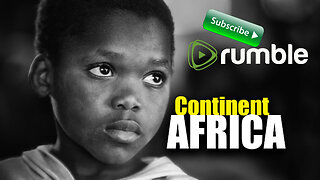 3:11
3:11
The Wonders of the World
11 months agoThe African Continent
34 -
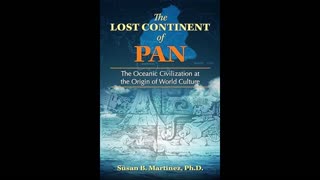 1:57:50
1:57:50
BarbaraDeLong
3 months agoThe Lost Continent of Pan: The Oceanic Civilization at the Origin
253 -
 3:39
3:39
Mike Martins Channel
5 months agoOn the brink of a catastrophic water crisis, Major Water Wars Ahead, Next Distraction ,
5942 -
 2:08:37
2:08:37
chycho
1 year agoMapping Out Global Conflicts, Part 5: California, Sudan, Turkey, China, Europe (Geopolitics 24:42)
365 -
 2:29:40
2:29:40
chycho
1 year agoTectonics, Earthquakes & Mapping Out Global Conflicts: Geology, Geophysics, Geopolitics, Part 1 ASMR
474 -
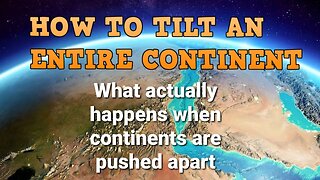 5:05
5:05
CreationNtheUniverse
10 months agoThe Birth of a New Sea in Africa: Unveiling Earth's Tectonic Forces and Continental Transformations
64 -
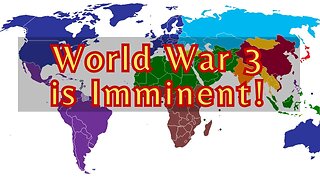 24:21
24:21
Dr. Joe Ligato
7 months agoIs a Global Showdown Imminent? 7 Civilizations Shaping Our World
179 -
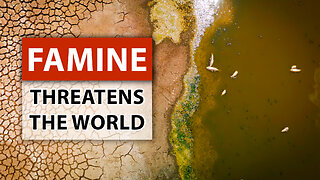 6:57
6:57
Creative Society
10 months agoDROUGHT 2023: A Global Crisis Unleashed
1.09K4 -
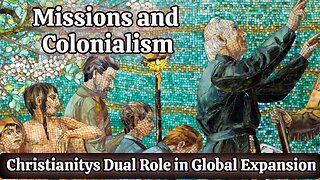 5:21
5:21
The History Speaks (Books Reader)
8 months agoMissions and Colonialism Christianity's Dual Role in Global Expansion
570 -
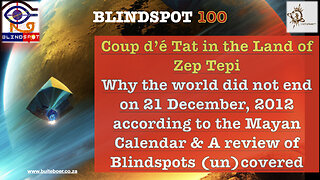 20:26
20:26
BuiteboerBlindspot
3 months agoBlindspot 100 Coup d’éTat in Land of Zep Tepi: why the world did not end @ 21 Dec 2012
200